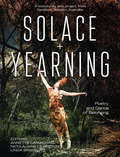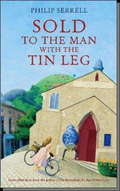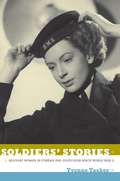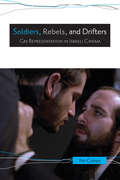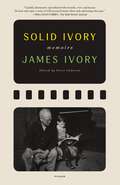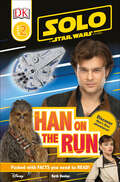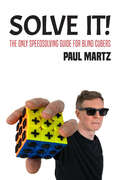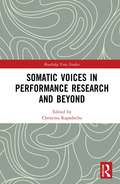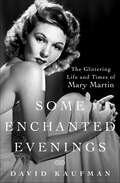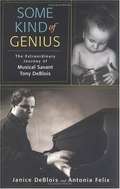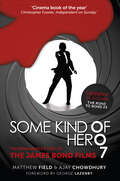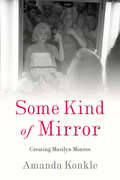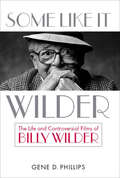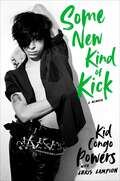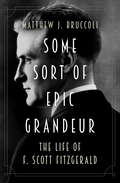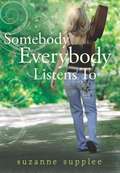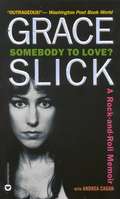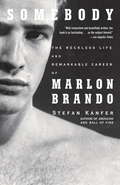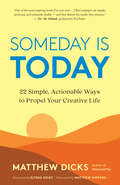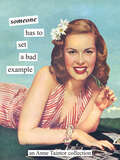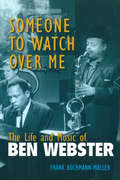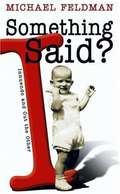- Table View
- List View
Solace + Yearning – Poetry of Dance and Belonging: A Community Arts Project from Denmark, Western Australia
by Annette Carmichael‘Solace + Yearning’ layers landscape, poetry, eco-art and contemporary dance to create an immersive space for many voices: yearning to connect to country, grief for what is absent, and reaching towards an understanding of indigenous language and culture. “Along the edges, voices call softly, softly… the past speaking to the present.” This multi-arts collaboration explores ‘settler guilt’ and ‘solastalgia’—a sense of loss caused by environmental change—in a small rural community. The work unravels contradictory and complicated feelings about Australia’s stories, the assumed advantage of non-indigenous Australians, and yet our deep longing for the wisdom and connection intrinsic in indigenous cultures. “It is beneath the bark where stories are whispered and life rises to stitch together this river with this sky.” Performed in Denmark, Western Australia in 2012, and again as a solo performance by Annette Carmichael in 2014, these images and reflections portray a complex relationship between people and place. “Sometimes, sometimes I make the mistake of thinking that what has not been written down has been forgotten.” With gratitude to Joey Williams, Wayne Webb, Toni Webb, and Harley Coyne, who walked the trail with us and generously shared their Noongar culture and stories.
Sold to the Man With the Tin Leg
by Philip SerrellWhen Philip Serrell - now well known for his television appearances - gave up teaching to become a professional auctioneer, he thought he was embarking on a sensible and safe career . . . a quiet life in the country with no surprises. In THE AUCTIONEER'S LOT we found out how wrong he was. SOLD TO THE MAN WITH THE TIN LEG Philip describes more of his extraordinary experiences as a country auctioneer, aided and abetted by some of the most colourful characters Worcestershire has to offer. From dodgy cars to fakes in the saleroom; angry livestock, mangled silverware and tortuous - not to mention muddy - experiences in local markets and farm sales, Philip has been there, done that and got the hoofprints on his suit to prove it. And of course, there's the return¬? Philip's tin-legged boss . . .
Sold to the Man With the Tin Leg
by Philip SerrellWhen Philip Serrell - now well known for his television appearances - gave up teaching to become a professional auctioneer, he thought he was embarking on a sensible and safe career . . . a quiet life in the country with no surprises. In THE AUCTIONEER'S LOT we found out how wrong he was. SOLD TO THE MAN WITH THE TIN LEG Philip describes more of his extraordinary experiences as a country auctioneer, aided and abetted by some of the most colourful characters Worcestershire has to offer. From dodgy cars to fakes in the saleroom; angry livestock, mangled silverware and tortuous - not to mention muddy - experiences in local markets and farm sales, Philip has been there, done that and got the hoofprints on his suit to prove it. And of course, there's the return  Philip's tin-legged boss . . .
Soldiers' Stories: Military Women in Cinema and Television Since World War II
by Yvonne TaskerFrom Skirts Ahoy! to M*A*S*H, Private Benjamin, G. I. Jane, and JAG, films and television shows have grappled with the notion that military women are contradictory figures, unable to be both effective soldiers and appropriately feminine. In Soldiers' Stories, Yvonne Tasker traces this perceived paradox across genres including musicals, screwball comedies, and action thrillers. She explains how, during the Second World War, women were portrayed as auxiliaries, temporary necessities of "total war. " Later, nursing, with its connotations of feminine care, offered a solution to the "gender problem. " From the 1940s through the 1970s, musicals, romances, and comedies exploited the humorous potential of the gender role reversal that the military woman was taken to represent. Since the 1970s, female soldiers have appeared most often in thrillers and legal and crime dramas, cast as isolated figures, sometimes victimized and sometimes heroic. Soldiers' Stories is a comprehensive analysis of representations of military women in film and TV since the 1940s. Throughout, Tasker relates female soldiers' provocative presence to contemporaneous political and cultural debates and to the ways that women's labor and bodies are understood and valued.
Soldiers, Rebels, and Drifters: Gay Representation in Israeli Cinema
by Nir CohenA cultural history of gay filmmaking in Israel that explores its role in the rise of gay consciousness over the past three decades.
Solid Ivory: Memoirs
by James IvoryThe irreverent, brilliant memoirs of the legendary filmmaker James IvoryIn Solid Ivory, a carefully crafted mosaic of memories, portraits, and reflections, the Academy Award–winning filmmaker James Ivory, a partner in the legendary Merchant Ivory Productions and the director of A Room with a View, Howards End, Maurice, and The Remains of the Day, tells stories from his remarkable life and career as one of the most influential directors of his time. At times, he touches on his love affairs, looking back coolly and with unexpected frankness.From first meeting his collaborator and life partner, Ismail Merchant, at the Indian Consulate in New York to winning an Academy Award at age eighty-nine for Call Me by Your Name; from seeing his first film at age five in Klamath Falls, Oregon, to memories of Satyajit Ray, Jean Renoir, The New Yorker magazine’s film critic Pauline Kael (his longtime enemy), Vanessa Redgrave, J. D. Salinger, George Cukor, Kenneth Clark, Bruce Chatwin, Ruth Prawer Jhabvala, and Merchant—Ivory writes with invariable fluency, wit, and perception about what made him who he is and how he made the movies for which he is known and loved.Solid Ivory, edited by Peter Cameron, is an utterly winning portrait of an extraordinary life told by an unmatched storyteller.
Solo: Solo: A Star Wars Story (DK Readers Level 2)
by DKYoung readers will love this Han Solo book, packed with characters and adventures from the new Star Wars™ movie, Solo: A Star Wars Story™. Discover the new heroes, villains, aliens, droids, and vehicles from the movie, plus fan-favorites Han, Chewie, Lando, and the Millennium Falcon. Improve your reading skills while learning about the world of young Han Solo. Solo: A Star Wars Story Han on the Run is a Level 2 Reader packed with fun facts for kids who are beginning to read. It is part of an innovative DK series of leveled reading books that combine a highly visual approach with engaging non-fiction narratives.© & TM 2018 LUCASFILM LTD. Used Under Authorization.
Solo: Solo: A Star Wars Story (DK Readers Level 2)
by DKYoung readers will love this Han Solo book, packed with characters and adventures from the new Star Wars™ movie, Solo: A Star Wars Story™. Discover the new heroes, villains, aliens, droids, and vehicles from the movie, plus fan-favorites Han, Chewie, Lando, and the Millennium Falcon. Improve your reading skills while learning about the world of young Han Solo. Solo: A Star Wars Story Han on the Run is a Level 2 Reader packed with fun facts for kids who are beginning to read. It is part of an innovative DK series of leveled reading books that combine a highly visual approach with engaging non-fiction narratives.© & TM 2018 LUCASFILM LTD. Used Under Authorization.
Solve It! The Only Speedsolving Guide for Blind Cubers
by Paul MartzYou're blind. You interact with a sighted world by touch. Everything you do requires memory, agility, and concentration. Despite new challenges each day, you persevere and succeed. You're a problem solver. <P><P> If that's you, then you already possess the skills to solve the tactile Rubik's Cube™. <P><P> Solve It! is written for you—the blind cuber, solving a tactile cube by touch. It contains no illustrations or diagrams. Whether you read it with screen reading software or a braille display, Solve It! explains every step with 100% accessible plain text. <P><P> If you're new to the cube, this book features a solution that is easy to learn and master. But Solve It! goes beyond basic information. It includes a speedcubing method that will dramatically reduce your solution time. After you read this book, you'll be ready to solve competitively—something most blind cubers never attempt.
Somatic Voices in Performance Research and Beyond (Routledge Voice Studies)
by Christina KapadochaSomatic Voices in Performance Research and Beyond brings together a community of international practitioner-researchers who explore voice through soma or soma through voice. Somatic methodologies offer research processes within a new area of vocal, somatic and performance praxis. Voice work and theoretical ideas emerge from dance, acting and performance training while they also move beyond commonly recognized somatics and performance processes. From philosophies and pedagogies to ethnic-racial and queer studies, this collection advances embodied aspects of voices, the multidisciplinary potentialities of somatic studies, vocal diversity and inclusion, somatic modes of sounding, listening and writing voice. Methodologies that can be found in this collection draw on: eastern traditions body psychotherapy-somatic psychology Alexander Technique, Feldenkrais Method Authentic Movement, Body-Mind Centering, Continuum Movement, Integrative Bodywork and Movement Therapy Fitzmaurice Voicework, Linklater Technique, Roy Hart Method post-Stanislavski and post-Grotowski actor-training traditions somaesthetics The volume also includes contributions by the founders of: Shin Somatics, Body and Earth, Voice Movement Integration SOMart, Somatic Acting Process This book is a polyphonic and multimodal compilation of experiential invitations to each reader’s own somatic voice. It culminates with the "voices" of contributing participants to a praxical symposium at East 15 Acting School in London (July 19–20, 2019). It fills a significant gap for scholars in the fields of voice studies, theatre studies, somatic studies, artistic research and pedagogy. It is also a vital read for graduate students, doctoral and postdoctoral researchers.
Some Enchanted Evenings: The Glittering Life and Times of Mary Martin
by David KaufmanMary Martin was one of the greatest stars of her day. Growing up in Texas, she was married early to Benjamin Hagman and gave birth to her first child, Larry Hagman. She was divorced even more quickly. Martin left little Larry with her parents and took off for Hollywood. She didn't make a dent in the movie industry and was lured to New York where she found herself auditioning for Cole Porter and his new show "Leave It to Me!". After she sang the bawdy "My Heart Belongs to Daddy", she ended up on the cover of Life magazine. Six years later, she became the Toast of Broadway when she starred in "South Pacific". After that, she flew as "Peter Pan", yodeled in "The Sound of Music", took "Hello, Dolly!" on the road and shared a four-poster with Robert Preston in "I Do! I Do!". Her personal life was just as interesting: In NYC, she met and married Richard Halliday, a closeted upper-class homosexual who adored her, Broadway and interior decorating (though probably not in that order). They were a powerful twosome. There were rumors about Martin, too, being in a lesbian relationship with both Janet Gaynor and Jean Arthur. Peopled with legends like Ethel Merman, Ezio Pinza, Noel Coward and a starry cast of thousands, David Kaufman's "Some Enchanted Evenings" is the delectable story of the one and only Mary Martin, a woman who described herself as a chicken farmer from Texas only to become Peter Pan and capture America's heart.
Some Kind of Genius: The Extraordinary Journey of Musical Savant Tony Deblois
by Antonia Felix Janice DebloisFor everyone whose heart was touched by the movie Rain Man, here is the inspiring true story of an exceptional autistic savant whose musical gifts thrill audiences the world over. Ever since he was born--blind and weighing less than two pounds--Tony DeBlois has been defying the odds and wildly surpassing others' expectations. Tony's story will hold special appeal for all who have seen him on the Today s how and Entertainment Tonight, etc.
Some Kind of Hero: The Remarkable Story of the James Bond Films
by Matthew Field Ajay Chowdhury George LazenbyFor over 50 years, Albert R. Broccoli’s Eon Productions has navigated the ups and downs of the volatile British film industry, enduring both critical wrath and acclaim in equal measure for its now legendary James Bond series. Latterly, this family run business has been crowned with box office gold and recognised by motion picture academies around the world. However, it has not always been plain sailing. Changing financial regimes forced 007 to relocate to France and Mexico; changing fashions and politics led to box office disappointments; and changing studio regimes and business disputes all but killed the franchise. And the rise of competing action heroes has constantly questioned Bond’s place in popular culture. But against all odds the filmmakers continue to wring new life from the series, and 2012’s Skyfall saw both huge critical and commercial success, crowning 007 as the undisputed king of the action genre. Some Kind of Hero recounts this remarkable story, from its origins in the early ‘60s right through to the present day, and draws on hundreds of unpublished interviews with the cast and crew of this iconic series.
Some Kind of Mirror: Creating Marilyn Monroe
by Amanda KonkleAlthough she remains one of the all-time most recognizable Hollywood icons, Marilyn Monroe has seldom been ranked among the greatest actors of her generation. Critics have typically viewed her film roles as mere extensions of her sexpot star persona. Yet this ignores both the subtle variations between these roles and the acting skill that went into the creation of Monroe’s public persona. Some Kind of Mirror offers the first extended scholarly analysis of Marilyn Monroe’s film performances, examining how they united the contradictory discourses about women’s roles in 1950s America. Amanda Konkle suggests that Monroe’s star persona resonated with audiences precisely because it engaged with the era’s critical debates regarding femininity, sexuality, marriage, and political activism. Furthermore, she explores how Monroe drew from the techniques of Method acting and finely calibrated her performances to better mirror her audience’s anxieties and desires. Drawing both from Monroe’s filmography and from 1950s fan magazines, newspaper reports, and archived film studio reports, Some Kind of Mirror considers how her star persona was coauthored by the actress, the Hollywood publicity machine, and the fans who adored her. It is about why 1950s America made Monroe a star, but it is also about how Marilyn defined an era.
Some Like It Wilder: The Life and Controversial Films of Billy Wilder (Screen Classics #Sccl)
by Gene D. PhillipsA biography of the six-time Oscar-winning director of films like Some Like It Hot and Double Indemnity, featuring analysis of his work.Although his career spanned fifty years and included more than fifty films, Austrian-American film director Billy Wilder (1906-2002) may be best known for the legendary shot of Marilyn Monroe’s dress billowing over a subway grating in The Seven Year Itch (1955). This “shot seen round the world” is representative not only of Hollywood’s golden era of cinema but also of one of its most prolific and brilliant directors. Wilder, whose filmography includes such classics as Sunset Boulevard (1950), Sabrina (1954), Witness for the Prosecution (1957), and Some Like It Hot (1959), is often remembered for his versatility, biting wit, and passion for challenging social and moral conventions.Author Gene D. Phillips departs from the traditional biography in Some Like It Wilder, offering new insights into the acclaimed director’s professional and private life. In preparation for the book, Phillips conducted personal interviews with Wilder and other key players from the legendary director’s life and times. Phillips’s unique combination of analysis and biographical detail brings Wilder to life, as both an artist and man.Phillips traces Wilder’s path from Berlin, where he worked as a scriptwriter for one of the city’s largest studios, to Hollywood, where he would quickly establish himself as a premier film director. Forming a partnership with writer-producer Charles Brackett, Wilder directed the classic films Five Graves to Cairo (1943), Double Indemnity (1945), and The Lost Weekend (1945), which earned Academy Awards for best picture, best director, and best screenplay. During the 1960s, Wilder continued to direct and produce controversial comedies, including Kiss Me Stupid (1964) and The Apartment (1960). The Apartment brought Wilder another round of Oscars for best picture, best director, and best screenplay.Wilder’s maverick approach and independent artistic vision pushed boundaries and ensured his legacy as one of the Hollywood greats. Sharply written, Some Like It Wilder serves as a comprehensive companion to Wilder’s films, offering a personalized and heartfelt account of the life and genius of this compelling director.Praise for Some Like It Wilder“Featuring Gene D. Phillips’ unique, in-depth critical approach, Some Like It Wilder . . . provides a groundbreaking overview of a filmmaking icon . . . . This definitive biography reveals that Wilder was, and remains, one of the most influential directors in filmmaking.” —Turner Classic Movies“[Phillips] goes beyond the surface and deep into the complex mind and soul of the famous film director . . . . This book is, in my view, definitive.” —Vincent LoBrutto, author of Martin Scorsese: A Biography
Some New Kind of Kick: A Memoir
by Kid Congo PowersAn intimate, coming-of-age memoir by legendary guitarist Kid Congo Powers, detailing his experiences as a young, queer Mexican-American in 1970s Los Angeles through his rise in the glam rock and punk rock scenes.Kid Congo Powers has been described as a &“legendary guitarist and paragon of cool&” with &“the greatest resume ever of anyone in rock music." That unique imprint on rock history stems from being a member of not one but three beloved, groundbreaking, and influential groups—Nick Cave and the Bad Seeds, the Cramps, and last but not least, The Gun Club, the wildly inventive punk-blues band he co-founded.Some New Kind of Kick begins as an intimate coming of age tale, of a young, queer, Chicano kid, growing up in a suburb east of East LA, in the mid-&‘70s, exploring his sexual identity through glam rock. When a devastating personal tragedy crushes his teenage dreams, he finds solace and community through fandom, as founder (&‘The Prez&’) of the Ramones West Coast fan club, and immerses himself in the delinquent chaos of the early LA punk scene.A chance encounter with another superfan, in the line outside the Whiskey-A-Go-Go to get into a Pere Ubu concert, changes the course of his life entirely. Jeffrey Lee Pierce, a misfit Chicano punk who runs the Blondie fan club, proposes they form a band. The Gun Club is born. So begins an unlikely transition from adoring fan to lauded performer. In Pierce, he finds brotherhood, a creative voice, and a common cause, but also a shared appetite for self-destruction that threatens to overwhelm them both.Quirky, droll, and heartfelt, with a pitch-perfect evocation of time and place, and a wealth of richly-drawn supporting characters, Some New Kind of Kick is a memoir of personal transformation, addiction and recovery, friendship and belonging, set against the relentless creativity and excess of the &’70s and &’80s underground music scenes.
Some Sort of Epic Grandeur: The Life of F. Scott Fitzgerald
by Matthew J. Bruccoli&“Epic indeed, this is the definitive biography of Fitzgerald, plain and simple. There&’s no reason to own another.&” —Library Journal The Great Gatsby, The Beautiful and Damned, Tender Is the Night, &“The Curious Case of Benjamin Button.&” These works and more elevated F. Scott Fitzgerald to his place as one of the most important American authors of the twentieth century. After struggling to become a screenwriter in Hollywood, Fitzgerald was working on The Last Tycoon when he died of a heart attack in 1940. He was only forty-four years old. Fitzgerald left behind his own mythology. He was a prince charming, a drunken author, a spoiled genius, the personification of the Jazz Age, and a sacrificial victim of the Depression. Here, Matthew J. Bruccoli strips away the façade of this flawed literary hero. He focuses on Fitzgerald as a writer by tracing the development of his major works and his professional career. Beginning with his Midwest upbringing and first published works as a teenager, this biography follows Fitzgerald&’s life through the successful debut of This Side of Paradise, his turbulent marriage to Zelda Sayre, his time in Europe among The Lost Generation, the disappointing release of The Great Gatsby, and his ignominious fall. As former US poet laureate James Dickey said, &“the spirit of the man is in the facts, and these, as gathered and marshalled by Bruccoli over thirty years, are all we will ever need. But more important, they are what we need.&”
Some of My Best Friends Are Monsters (Camp Haunted Hills #2)
by Bruce CovilleCamp Haunted Hills is the movie camp where anything can happen and usually does. This time the campers are turning into monsters. Copyright © Libri GmbH. All rights reserved. (Illustrations described.)
Somebody Everybody Listens To
by Suzanne SuppleeRetta Lee Jones is blessed with a beautiful voice and has big dreams of leaving her tiny Tennessee hometown. With a beaten down car, a pocketful of hard-earned waitressing money, and stars in her eyes, Retta sets out to make it big in Nashville. But the road to success isn?t a smooth one in a town filled with dreamers, and Retta begins to have doubts: can she make her mark while staying true to herslf? From the breakout author of Artichoke?s Heart, this bighearted novel is a must-read for anyone who has ever chased a dream (or hummed along with Taylor Swift). .
Somebody To Love?: A Rock n' Roll Memoir
by Grace Slick Andrea CaganGrace Slick was the original "great rock diva." As the lead singer of Jefferson Airplane, which produced classics like "White Rabbit" and "Somebody to Love," she was at the forefront of the sixties and seventies counterculture. Now she offers a revealing portrait of the complex woman behind the rock-outlaw image and delivers a behind-the-scenes, no-holds-barred view of rock's grandest stages. Somebody to Love? tells what it was really like during, and after, the summer of love - and how one remarkable woman survived it all to remain today as vibrant and rebellious as ever.
Somebody: The Reckless Life and Remarkable Career of Marlon Brando
by Stefan KanferMarlon Brando will never cease to fascinate us: for his triumphs as an actor (On the Waterfront, The Godfather, Last Tango in Paris), as well as his disasters; for the power of the screen portrayals he gave, and for his turbulent, tumultuous personal life. Seamlessly intertwining the man and the work, Kanfer takes us through Brando's troubled childhood, to his arrival in New York in the 1940s, where he studied with the legendary Stella Adler, and at the age of twenty-three became the toast of Broadway in A Streetcar Named Desire. Kanfer expertly examines each of Brando's films - from The Men in 1950 to The Score in 2001 - making clear the evolution of Brando's singular genius, while also shedding light on the cultural evolution of Hollywood itself. And he brings into focus Brando's self-destructiveness, his lifelong dissembling, his deeply ambivalent feelings towards his chosen vocation, and the tragedies that shadowed his final years. This is a never-before-seen portrait of one of the most extraordinary talents of the twentieth century.
Someday Is Today: 22 Simple, Actionable Ways to Propel Your Creative Life
by Matthew DicksREALIZE YOUR CREATIVE DREAMS — STARTING TODAYAre you good at dreaming about what you’re going to accomplish “someday” but not good at finding the time and getting started? How will you actually make that decision and do it? The answer is this book, which offers proven, practical, and simple ways to turn random minutes throughout your days into pockets of productivity, and dreams into accomplishments.In addition to presenting his own winning strategies for getting from dreaming to doing, Matthew Dicks offers insights from a wide range of creative people — writers, editors, performers, artists, and even magicians — on how to augment inspiration with motivation. His actionable steps will help you:silence negative messages from family, friends, and teacherseliminate time-sucking activities (and people)be willing to make terrible thingsfind supporters here, there, and everywherecultivate optimism in the face of negativity and obstaclesEach strategy is accompanied by amusing and inspiring personal and professional anecdotes and a clear plan of action. Someday Is Today will give you every tool to get started and finish that _________ [fill in the blank].
Someone Has to Set a Bad Example: An Anne Taintor Collection
by Anne TaintorThe phenomenally popular artist wittily reveals the realities behind images of perfect women in midcentury marketing. We can&’t be good all the time, and no one knows it better than Anne Taintor. This generous collection of her most popular artwork includes more than 150 images in categories such as friendship (a real friend will help you hide the body), motherhood (WOW! I get to give birth AND change diapers!), money (screw the budget!), attitude (let a smirk be your umbrella), and more. Also featuring an introduction by Taintor, this hilarious volume perfectly captures the deliciously sarcastic, snarky, and honest things that most women have found themselves thinking at one time or another. If you&’re looking for trouble, look no further. . . .
Someone to Watch Over Me: The Life and Music of Ben Webster
by Frank Buchmann-MollerBorn in Kansas City in 1909, tenor saxophonist Ben Webster worked with a number of great jazz orchestras before becoming Duke Ellington's first major tenor soloist. His brilliant and troubled career spanned nearly half a century. This biography is based upon interviews with more than 50 people in the U. S. and Europe as well as excerpts from European periodicals and a study of all of Webster's known recordings. Büchmann-Møller is head of the jazz archive at Carl Neilsen Academy of Music in Odense, Denmark. Annotation ©2006 Book News, Inc. , Portland, OR (booknews. com)
Something I Said? Innuendo and Out the Other
by Michael FeldmanWitticisms from the American humorist.
